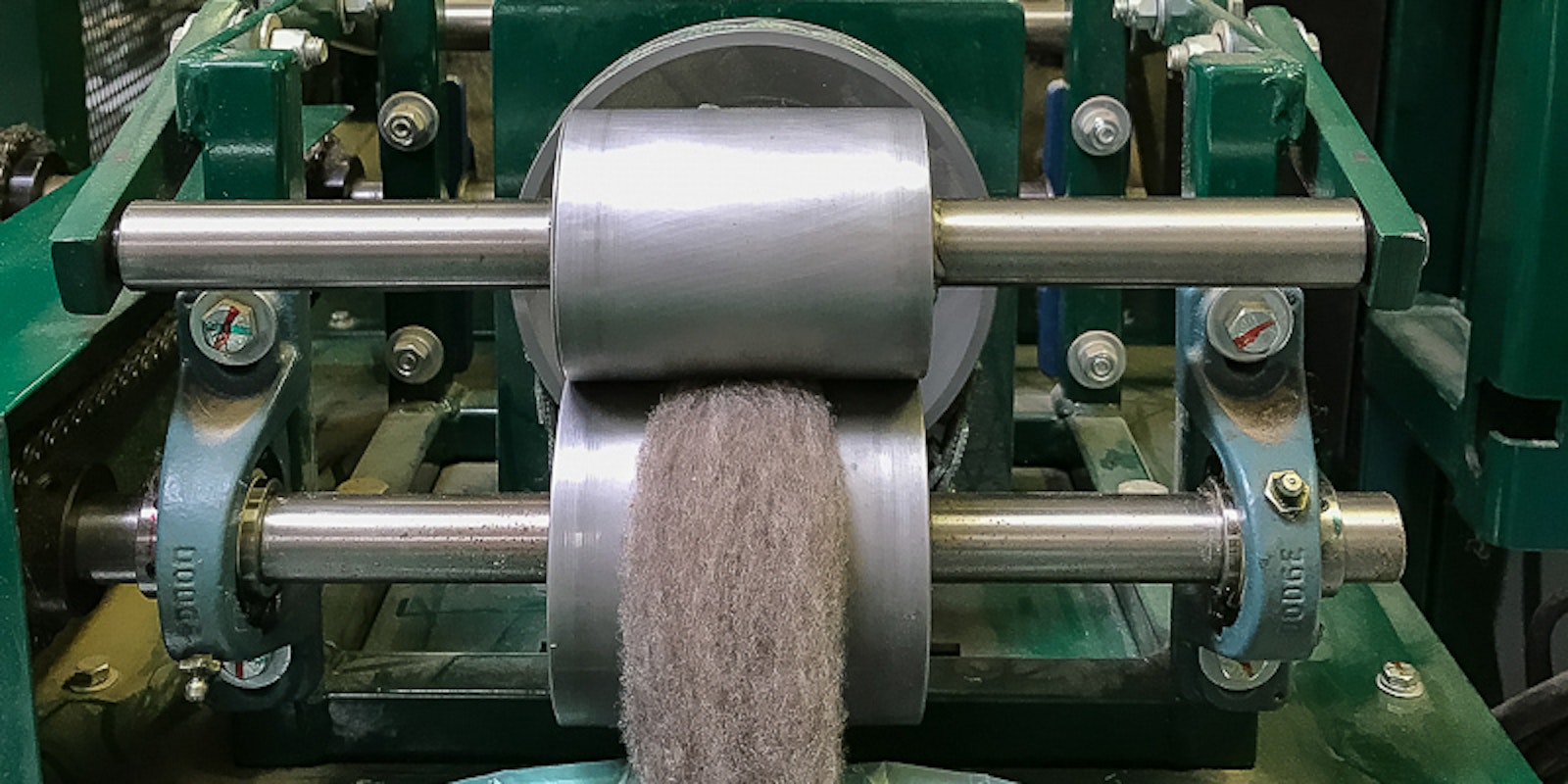Many spinners collect fleeces faster than they can wash, process, and spin them. Packing these raw lovelies into a box and mailing them to a woolen mill is often a welcome answer. The mills can take our raw fibers and expertly wash, prepare, and return them ready for spinning.
You might also be a spinner that enjoys buying fleeces off the hoof but prefer to cut out the messy middle bit and go straight to spinning. However, this doesn’t always go as well as we would like for many reasons. Knowing more about your fleece and the processing can help—here is a quick guide.
Kate’s Quick Guide: Prepping Your Fleece for the Mill:
Skirt! (Seriously.)
While it is always oh-so-tempting to drop your new fleece straight into a box and send it to the mill, skirting is one of the most important steps in a successful mill experience. If you do not have a skirting table, just lay an old sheet or tarp outside or in your garage. Dump out the fleece and gently unroll it. If you are working with a curly longwool fleece, it will often be a big pile of locks—this is okay. If your fleece holds together in more-or-less one piece, you will usually notice that most of the short fiber and dirty bits are around the margins. Pull these out and set them aside. Ruth Baldwin, who I will share more about next week, has a nice illustration posted on her website. Know how long your locks are (staple) and how dirty the fleece is over all—this will help you decide how to process it.
Look for fleece problems before you send.
Some fleece issues, such as lots of hay and vegetable matter (VM), tender tips, and fleece breaks are important to spot before sending your fleece to the mill. Some VM will fall out while it is being carded, but not all.
A lock of wool with a break. The fibers broke with a gentle tug on each end.
Understand the products.
Mills will have a specific range of products they can create. Some mills, such as Dakota Carding and Wool, specialize in carded cloud, while others may specialize in rovings and batts. A smaller number of mills can also process carded roving further into pin-drafted roving or combed top. There are mills all over the United States that offer different levels of processing. When I have fine-wool fleeces with very tender tips or a down-type fleece full of chaff, I send it to a mill that can process combed top. The top-making process removes noils, second cuts, and VM, leaving fiber perfectly clean.
Ask for advice.
Most mill staff will give you feedback on what would be the best fit for your fleece. You can check their website for information about processing, staple length suggestions, and more.
Next week, we will hear from Ruth Baldwin of the Natural Twist, a fiber mill in central New Mexico, with some great advice for getting great rovings and avoiding disappointments.
For more insight on woolen mills, including seven Q&As with woolen-mill owners in the United States, read "Anything but Run of the Mill" by Anne Podlesak in Spin + Knit 2017.
—Kate Larson
Featured Image: Fine-wool roving emerges from the carder. Photos by Kate Larson.


